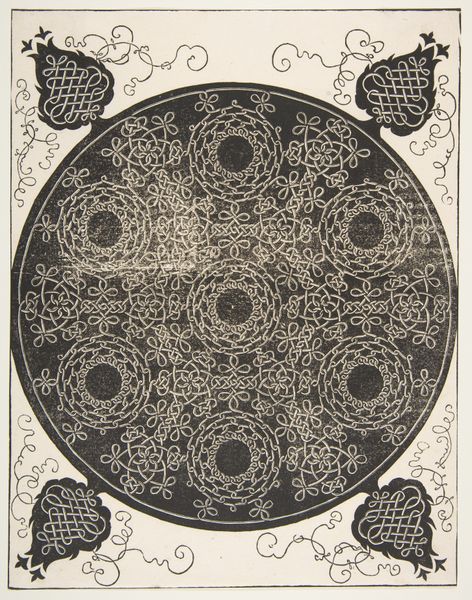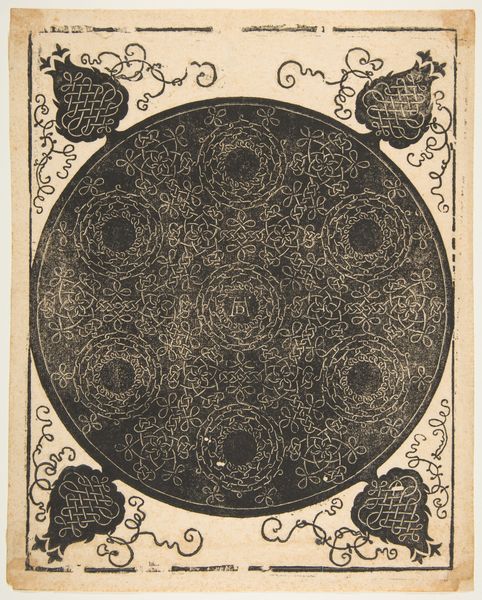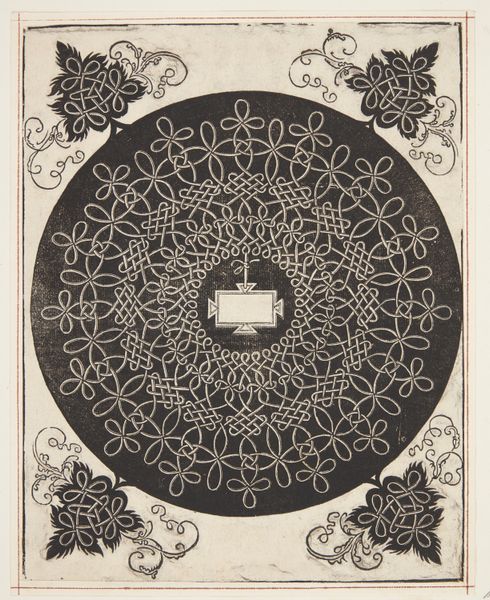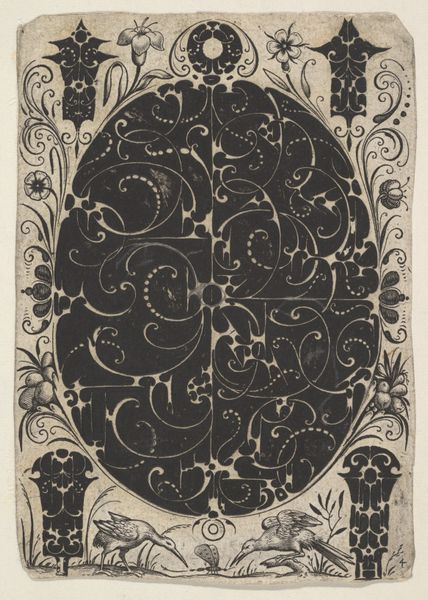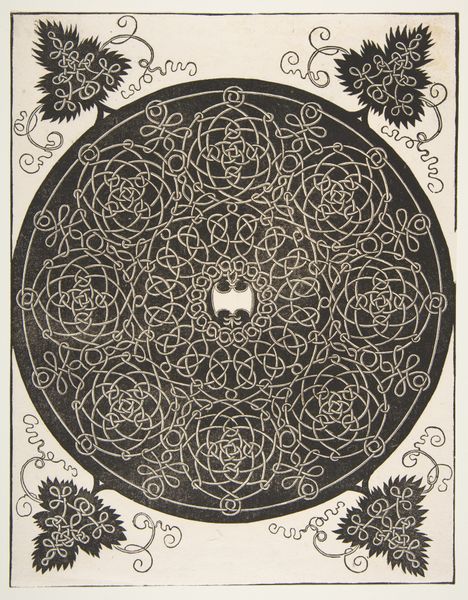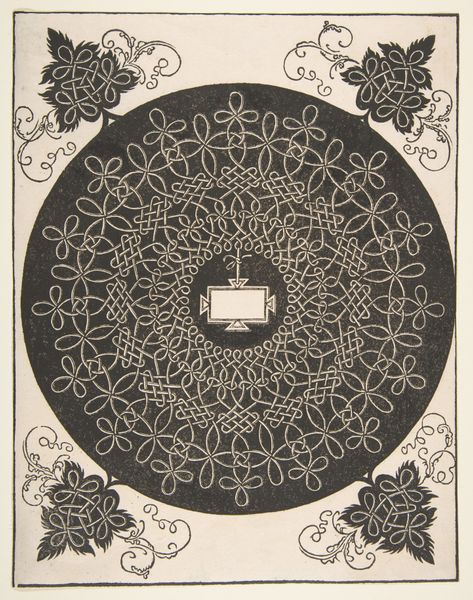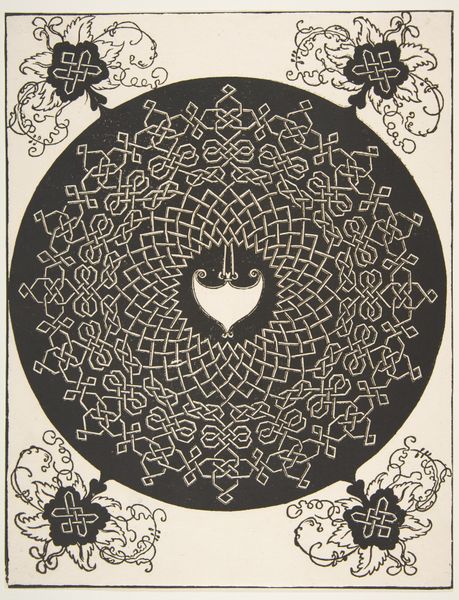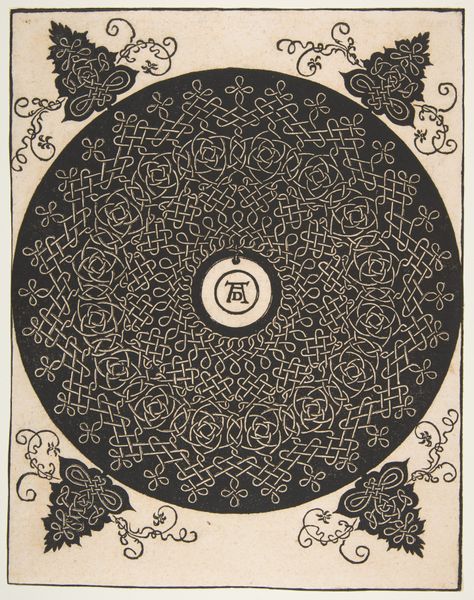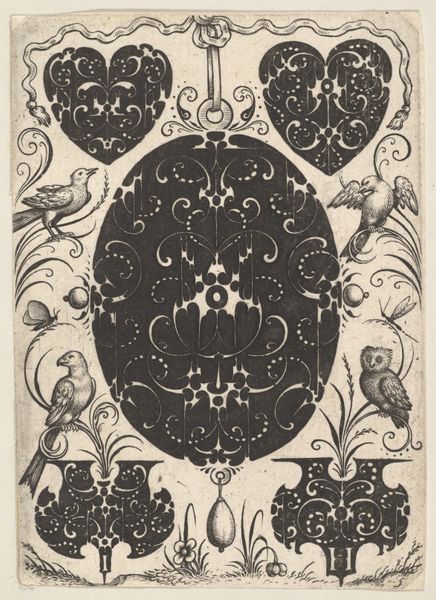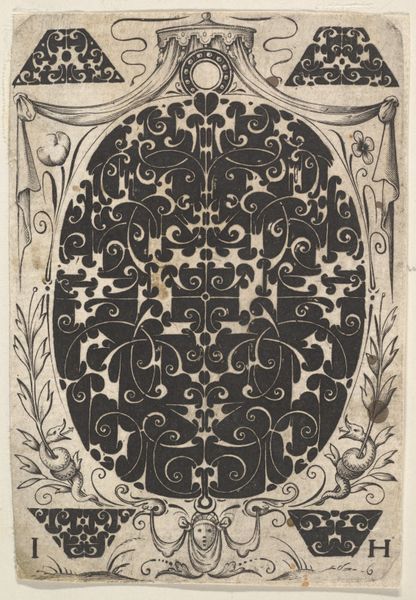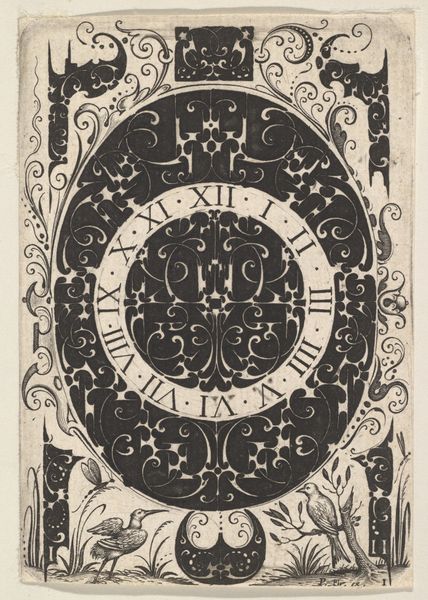
graphic-art, print, woodcut
#
graphic-art
#
medieval
# print
#
geometric
#
woodcut
Dimensions: 285 mm (height) x 228 mm (width) (bladmaal)
Curator: Welcome! Today we’re looking at Albrecht Dürer’s "Interlaced Cord Pattern with Seven Wreaths," a woodcut print from the early 16th century, specifically between 1507 and 1528, from the collection of the SMK, Statens Museum for Kunst. Editor: My initial reaction is one of intrigue. The stark black and white contrast, along with the meticulous detail, gives it an almost meditative quality. It seems a complex, tightly constructed composition. Curator: Indeed. The use of negative space is rather striking, especially given the intricate patterns. Notice the seven distinct wreaths, each acting as a contained microcosm within the larger circular design. This formal approach reveals much about Dürer's exploration of form and his mastery over the woodcut medium. The composition has a circular structure as well as square framing lines. The interplay adds an intrinsic tension between these two forms. Editor: It makes me think about the cultural context of the piece. These interlaced patterns echo Celtic knots, yet we find Dürer, a German Renaissance artist, employing them. Was he consciously engaging with or perhaps even appropriating cultural symbols of power and identity? The rigid, repeating geometry hints at power structures in early 16th-century Europe. The black/white dichotomy adds to the power structure; the symbolism is almost yin and yang. Curator: An interesting perspective! One could also consider this within the broader context of the Renaissance interest in classical forms, seen through a distinctly Northern European lens. He may have seen pattern as inherently connected with some symbolic purpose, such as familial lineages. Note the integration of letters within the design – suggesting Dürer's concern with the intersection of text and image. Editor: Absolutely. Also, to return to that stark contrast we noted earlier, it strikes me that for the communities in the regions which appropriated this aesthetic (Northwestern Europe in particular) the world was becoming quite binary. Christendom's influence on gender, race, and otherness would prove cataclysmic to marginalized people over the next several centuries, making me question if it has religious connections to symbols like rosary beads and rosary wreaths. I wouldn't call Dürer "woke" by any means, but his personal beliefs are a curiosity for me as I observe this image. Curator: Whether one approaches it through a formal lens or a cultural one, Dürer’s "Interlaced Cord Pattern with Seven Wreaths" offers a remarkable view into the aesthetic sensibilities and societal concerns of the early 16th century. Editor: A piece that continues to reveal itself through careful examination and historical contextualization. Thank you!
Comments
No comments
Be the first to comment and join the conversation on the ultimate creative platform.
